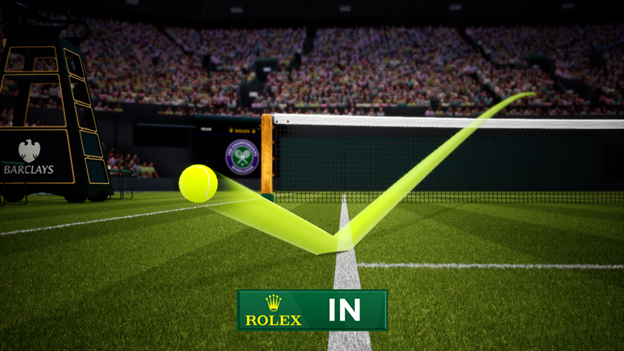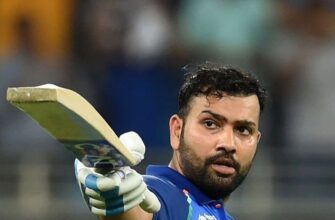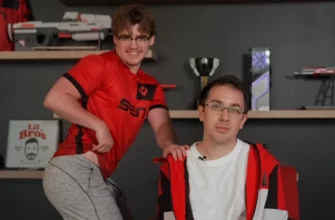Wimbledon, often seen as the custodian of tennis tradition, took a significant leap into the digital age this year by fully implementing electronic line-calling (ELC) across its courts for the first time. This change, replacing the familiar sight of human line judges, aligns the tournament with other major events like the Australian and US Opens. However, the transition has proven less than seamless, marked by technical malfunctions and vocal skepticism from some of the sport`s prominent figures.
The technology, primarily the Hawk-Eye system utilizing a network of cameras, aims to provide objective and instantaneous line calls. While this promises greater accuracy and removes the potential for human error (and arguably, the contentious “challenge” system that added a layer of drama), its debut at the All England Club has not been without hitches, leading to unexpected controversy.
Early Malfunctions Spark Debate
A key flashpoint occurred during Anastasia Pavlyuchenkova`s match against Britain`s Sonay Kartal. A shot from Kartal landed clearly beyond the baseline but was not called out by the ELC system. This forced the umpire to intervene, stopping the game and ordering the point to be replayed. Pavlyuchenkova was visibly frustrated, expressing her belief that she had been unfairly denied the point due to the system`s failure. “They stole the game from me,” she was quoted as saying.
Wimbledon officials later attributed this specific incident to human error – an operator had mistakenly deactivated the system on one side of the court for a game. They issued an apology to the affected players and promptly implemented a system change to prevent manual deactivation, aiming to restore confidence in the technology`s reliability. Despite this, another glitch reportedly occurred in a later match between Taylor Fritz and Karen Khachanov, where an `out` call was incorrectly made on a ball that landed in, attributed by organisers to the system not resetting properly.
Players Weigh In: Skepticism and Support
The introduction of ELC and the subsequent glitches have prompted varied reactions from players. Several have publicly questioned the system`s accuracy and expressed a preference for or nostalgia regarding the traditional approach.
British players Emma Raducanu and Jack Draper were among the first to voice concerns. Raducanu described some calls as “pretty dodgy” and admitted she did not trust the technology, citing instances where she believed balls were incorrectly called in or out. Draper similarly felt calls were missed in his match, questioning the system`s precision down to the millimetre. Belinda Bencic echoed this sentiment, stating she also didn`t fully trust it and noted that many players in the locker room shared this view, having observed questionable calls in other matches.
Beyond accuracy, some players miss the human element and the strategic layer the challenge system provided. The automated voice calls can also be difficult to hear over crowd noise, adding another minor complication.
However, not all players are critical. Taylor Fritz, despite experiencing a glitch himself (though in a previous tournament, not Wimbledon), expressed a preference for the ELC system. He highlighted the benefit of not having to stop points to challenge calls and avoiding arguments with officials, finding the automated system more straightforward despite the occasional issue. Novak Djokovic, while acknowledging the Pavlyuchenkova incident as a “really bad mistake” and a “system error,” generally trusts the technology, believing it is more accurate than human line judges overall and stating he hadn`t had bad calls from the system in his own matches at the tournament.
Wimbledon`s Stance: Confidence and Course Correction
In response to the controversy, Wimbledon organisers have stood by their decision to adopt ELC. They reiterated their belief in the system`s fundamental accuracy and that the notable malfunction was a preventable human error, now addressed. Chief executive Sally Bolton described the technology as “sufficiently robust” and the change as necessary for enhancing officiating accuracy while maintaining a balance of “tradition and innovation.”
The removal of the manual deactivation option from the Hawk-Eye system operator interface is a tangible step taken in direct response to the incident, intended to ensure such a specific failure cannot recur. Match assistants, human officials, remain present on courts, though in reduced numbers compared to the traditional setup, available in case technology fails completely.
The first year of electronic line-calling at Wimbledon has certainly added an unexpected narrative layer to the championships. While promising increased accuracy and efficiency, it has also highlighted that even advanced technology is susceptible to glitches and that the human element, whether the line judge or the skeptical player, remains a significant part of the sport`s complex and evolving landscape. The debate continues – can the bots truly replace the human eye without losing something essential?







